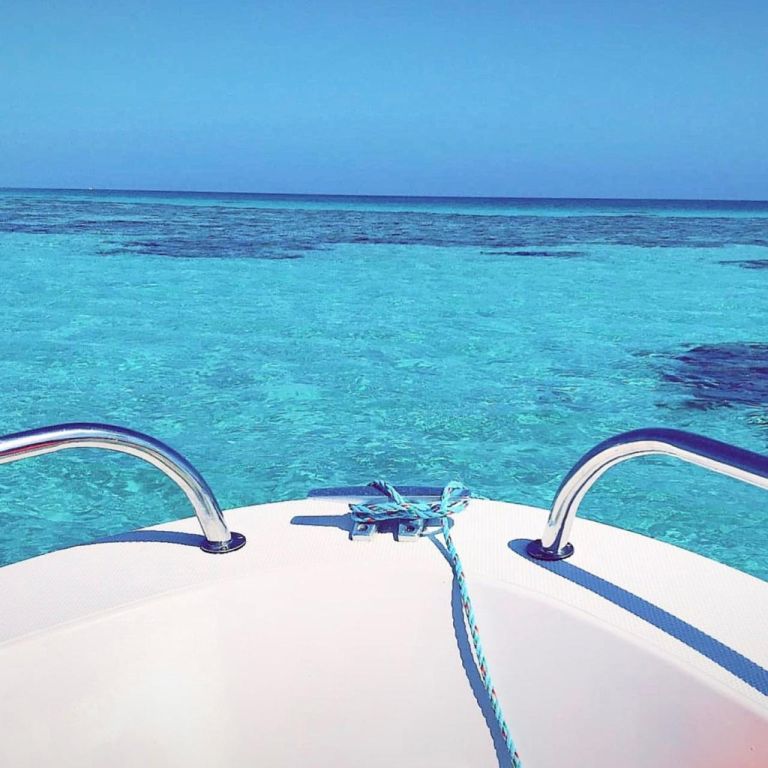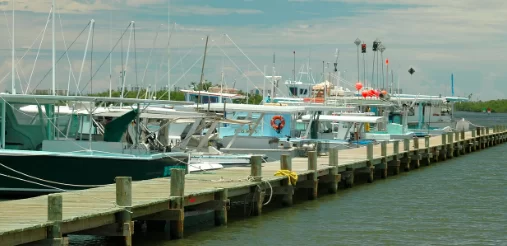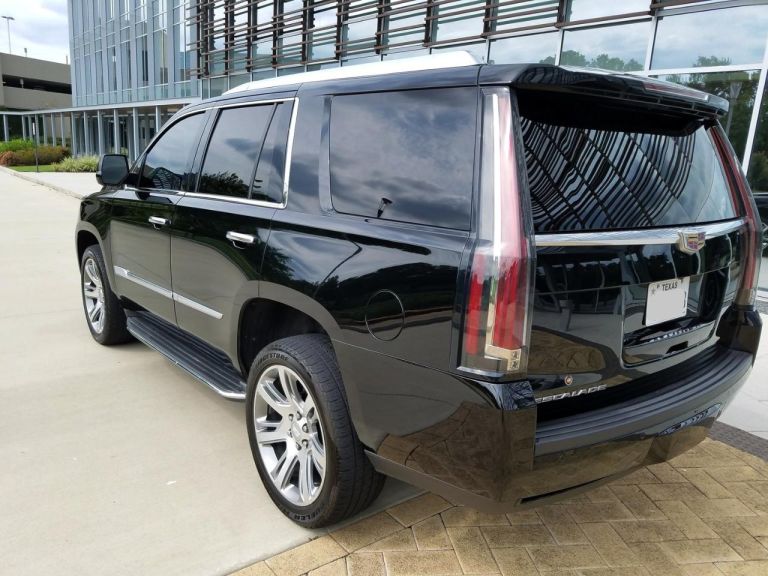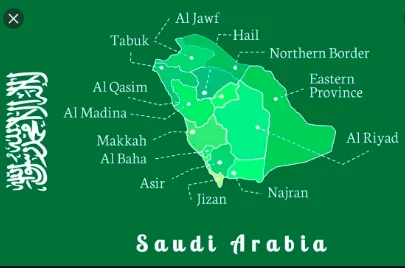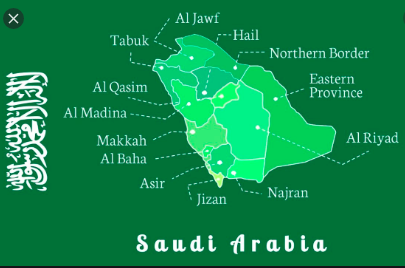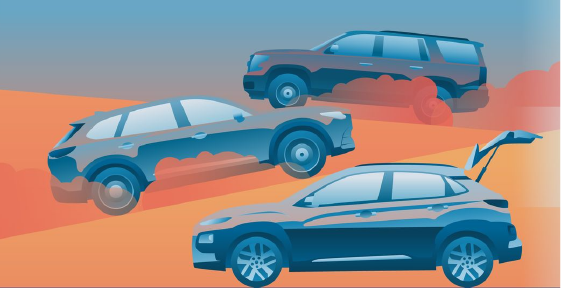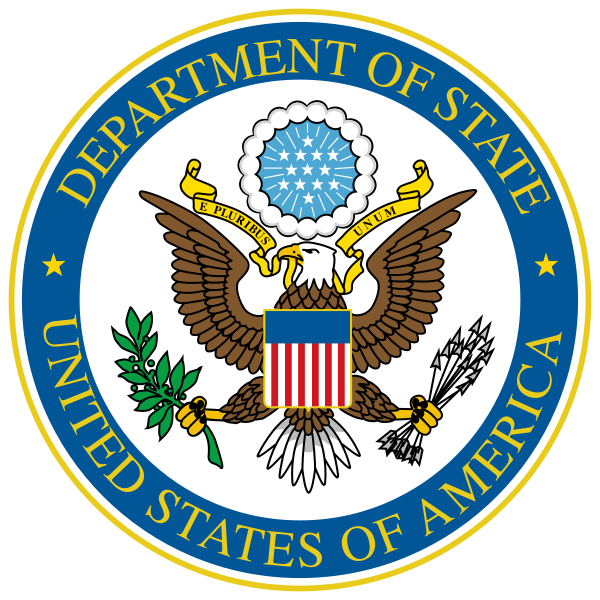- Product code: KSAsecurity
Saudi Arabia KSA Private Security Services
We can provide all of the following services a la carte for you in Saudia Arabia during your trip, mission, or project on the ground:
1. Latest and well-maintained 4x4's including fuel, insurance, and all associated fees (used for tech and oil firms, embassies, diplomats and VVIP's, even 2 Prime Ministers.)
2. Sliding door bus or minivan including fuel, insurance, and all associated fees.
3. English speaking guide and a minder/fixer who is very well connected in Riyadh all the way north to Iraq and South to Yemen, even with Air Force, US DoD, the government, and G4S. Additional specialists are available from tech, oil, mining, intelligence, maritime, aviation, antipiracy, banking, and disaster relief sectors.
4. Security with Armored Landcruiser (Level 7 Armor or Level 5 Armor if you need a discount and to notch down) - Plated for heavy assault defense frag and ballistic and armor-piercing weapons.
5. Close Protection Guards with the client crew in KSA by foot options (3 to 4) too if you want the minimum armed escort. They would need another SUV for this only. These are local professional security officers, and know how to scout and fire back, and are more practiced at giving chase rather than "guard"-ing for security "theatre."6. Elite Private Security Force: including lots of scouting and experience with the deep wilderness, kidnapping, planting spies for wildlife and human trafficking/organized crime busting, and urban mobility every direction in SS Africa MENA and Madagascar, and all cultures and contexts; These are including serious personal guards for the Prime Ministers of Japan and former US Vice Presidential Candidates and US Marine Corps Leadership in travel; US military base perimeter defense, INTERPOL; Kidnapping negotiations; Central Africa Evacuation in civil wars and cold war commands ' Eurasian Intelligence backgrounds.
These task forces are hired for 10 day blocks minimum including setup and scouting. More is not necessary unless you request, and then is pro-rated at regressive discounts. Discussion and advance meetings are encouraged.
*You do not have to pay their food and we arrange for food provisions allowance per day as by law now to avoid graft. It is obtained from the KSA gov
**all prices in USD and subject to 5.5% taxes and fees.
SATT uses trained and focused private security professionals, far superior in skill and more severe in attitude and subtle in movement than standard gate or night guards from most Saudi security "theatre" firms. We do not subcontract to small, inexperienced people or firms. They are paid well for their experience and sober focus on actual security, not security theatre, and all know how to fight back and give chase in real combat, how to elude detection in the cityscape, how to elevate to crises crack forces in the event of an ambush, and know to keep a low profile for clients and cargo. Our vehicles have strict maintenance regimes and excellent drivers, and we can employ scouts and intel feelers and fixers ahead for an additional cost as well.
| Cancellation policy | If within 90 days, balance is due and it is 100% non-refundable. 25% refundable if cancelled more than 90 days before. Insurance should be purchased to cover cancellations if possible. For a surcharge of 25% you can make it refundable minus 20% up to 2 weeks before deployment. |
| Aircraft Security | From $500 to $10000 depending on headcount and service level |
| Perimeter Security and Quarantine Services for tarmac to terminal, protection from penetration of the runway or the airframe ; live updates and time-stamped reports from the ground, airport permits and access included with certified handlers for airports, English speaking. All international and domestic runways of the nation, military partnership, civilian, and diplomatic. | |
| Secure Transportation (With an English speaking Security trained driver) | From $500 to $5000 per day depending on vehicle type and count, convoy, and roster. |
| Location to location, convoy and scout cars, armed and unarmed driver and passenger side vehicles. | |
| Armored Vehicles | From $2000 to $4000 per day. |
| Limited Vehicles available with differing levels of armor plating, supplied by Centigon and other armor plating manufacturers. Most are in the capital and based on availability. | |
| Executive Protection (With an English speaking agent) | From $300 to $2000 per day for basic, $4000 to $9000 per day for elite. |
| Guards available in different multiples, armed and unarmed. | |
| Corporate Investigations | From $500 to $10000 depending on the level of depth and the degree of probing, or on retainer. |
| For firms based in or conducting business in the country, or their agents/aliases/ | |
| Risk Assessments | From $500 to $10000 depending on the level of depth and the degree of probing, or on retainer |
| Financial, Credit, Physical, Political, Geographic, Terrain, Weather, Human Factors | |
| Security Surveys | From $500 to $10000 depending on the level of depth and the degree of probing, or on retainer. Access must be arranged by client, especially for telecommunications or facility premises or ports. |
| Discrete and thorough. – Strategy+Subtlty+Severity = Security. | |
| Training | Varies |
| We can train clients and their staff, or recruit for them, for long term local intelligence-rich management structures, and patrol guards or staffing trees with international security standards. We can train in offensive/pre-emptive, and defensive/red team security drills and monitoring. | |
| Asset Protection | Varies |
| Technology, Commodity, Facility, Equipment, Vehicle Security and Red teams | |
| Asset Recovery | From $5000 to $25000+ depending on the SOW (subsea is $100,000+) |
| Pickup, Rescue, and Recovery (Land and Sea and Subsea floor) from environments with difficult logistic, terrestrial, and human factors. Search and Rescue and Rapid Response-Retrieval. | |
| Event Security | From $1000 and up depending on the event |
7.1. Agents are not allowed to penetrate inside the aircraft, except if asked for by the Captain or Commander
7.2. Agents must carry gear and apparel for the mission
7.3. Agents must maintain minimal 2 meters distance with Air Company personnel or passengers
7.4. Agents should avoid close interaction with Air Company personnel
7.5. Agents should not perform any handling operations but are allowed to share flight info passed by to handler supervisor. Principle is that the best the handlers are performing, the safer and more comfortable, the faster the layover will last, and the happier Air Company will be.
7.6. Agents should not ask for any form of payment to the Captain or Air Company personnel or Passengers
7.7. Agents should receive before the flight the Flight plan (often very long document) and the General Declaration (with list of crew and pax). These documents are for info only, but the supervisor must confirm that the handlers have printed them and given to the crew.
8. Prior to Landing
8.2 Confirmation of ETA
8.3. 30 minutes before scheduled landing, be ready on the tarmac and:
8.3.1. report to all shareholders when on the tarmac
8.3.2. contact the handling company. Normally we will provide name and phone of supervisor obtained from the Air Company. Describe and deploy in your role as coordination and liaison
8.3.3. Contact with ATC to confirm landing final ETA
8.4. Contact every 3 to 30 minutes to guarantee that line of communication is OK
8.5. photographic or video communication with home base can be arranged
8.6. The following are the reports that are standard:
8.6.1. Aircraft landing report. Example: 1833Z Aircraft landed
8.6.2. Contact with crew report. Example: 1845Z Doors open, contact with crew
8.6.3. Beginning of passengers offloading report, if any
8.6.4. Beginning of offloading report, if any
8.6.5. End of passengers offloading report, if any
8.6.6. Beginning of refueling report
8.6.7. End of offloading report
8.6.8. End of refueling report. Example : 1925Z end of refueling, 40 000 liters
8.6.9. Beginning of luggage loading report
8.6.10. Beginning of passengers boarding report
8.6.11. End of luggage loading report
8.6.12. End of passengers boarding report. Example: 1945Z all 114 passengers onboard
8.6.13. Doors closed report
8.6.14. Taxiing report
8.6.15. Take off report and end of mission.
PERSONAL PROTECTIVE SECURITY SERVICES OVERVIEW
FOR TRAVELERS AND PERMANENT LOCATIONS ABROAD
(INCLUDED IN DELUXE & ELITE TIER PACKAGES FOR SPECIAL PROJECTS)
We are the actual suppliers for most top-10 security firms, same protocols and provisions, at typically 30-80% less of the cost of their sticker, which our staff and vendors wear to appear as if “they are running” things.
1. OVERVIEW
1.1 The provision of protective security services to personnel travelling or permanently posted is required when operating or visiting a location specified as requiring enhanced security and safety measures. Services could be required for a few days, several months or on a longer term contractual basis.
1.2 Resources for service are to be agreed for each task order. They shall be established based on the threat picture, operational requirements and the risk appetite. Services provided must be sourced to meet the contractual and task order requirements. The requirements are outline below for each Service is the minimum level acceptable, in addition to complying with the wider tender personnel and legal requirements within the SoW. Requirements and standards of delivery expected can be enhanced within the task order.
1.3 Overview of Personnel Protective Services that may be required for travellers and permanently based personnel in locations requiring enhanced security and safety measures:
1.4 The Contractor must be able to support services in semi and non-permissive environments, examples of locations are highlighted in Annex A of the SOW. Contractor must be clear in their bid where they do or do not operate, including highlighting if services are via local sub-contractors. They will also indicate which countries they and their sub-contractors are legally authorised to deliver service, including what permits are held, e.g. carriage of firearms.
2. PERSONAL SECURITY
2.1 The meet and greet service will:
- Have developed relationships with the airport security functions and management.
- Be able to meet arriving personnel airside.
- Be able to facilitate the traveller through immigration, including the use of VIP lounges and protocols.
- Be able to collect and arrange delivery of luggage to the traveller’s accommodation, including customs clearance as required.
- Be able to hand over personnel to any other supporting element.
- Be able to facilitate accommodation at the airport if other supporting elements are delayed or there is a change in the threat picture.
- Collect travellers from the departures drop zone and facilitate their passage through the airport until the departure lounge. This includes seeking priority and use of VIP lounges and protocol as required.
- Be able to arrange airport side access and drop off for VIPs and in emergency cases.
2.2 The driver and soft skin vehicle will be used for travellers in semi-permissive locations in a similar theme to that offered by hotel transportation. The service will:
- Drivers will hold an appropriate driving licence for the vehicle and have extensive driving experience in moving business executives.
- It is desirable for the drivers to hold advance driving qualifications and a medical qualification.
- Drivers will have extensive ground knowledge and understanding of road rules and regulations.
- Drivers will not have a criminal record or repeat driving violations.
- Drivers will be fit to drive having not consumed alcohol or drugs and be suitably rested to complete the task.
- Drivers will drive safely at all times and abide by speed limits.
- Drivers will understand protocol requirements and hold the confidentiality of any overheard conversation.
- Vehicles are to be serviceable, clean and of a standard befitting the requirement e.g. saloon or 4×4 at an executive level. On occasion the use of low-profile vehicles may be requested.
- The vehicle shall have a medical kit (including pressure bandages and tourniquet) and full running kit and spare tire.
- Provide a security update on any security situation changes to the client.
- Be connected to local security alerting network.
2.3 The local logistical and administrational support will be able to support:
- Visa applications.
- Accommodation or venue bookings.
- Property searches.
- Attend low level meetings to arrange logistical requirements.
- Shopping for food and water, especially during changing security situations.
- Support custom clearance for Import/export of goods e.g. weapons systems or vehicles.
- The support will:
- Have developed relationships with the country’s Ministry of Foreign Affairs and Ministry of Interior.
- Be able to speak the local languages and English to a proficient standard.
- Understand protocol skills.
- Be proficient in communicating in English via email
- Have a high degree of confidentiality.
- Have communication systems via GSM, Satellite and the internet.
- Translation skills desirable
3. MOBILE PROTECTIVE SECURITY SERVICES
3.1 Mobile protective security services will provide the provision of armed/unarmed Close Protection (CP) Services for temporary or permanent requirements within semi or non-permissive environments. The approach and make-up of the required Service support will be described in the Purchase Task Order (PTO) and supporting its documentation. The Service must be able to support all of the following:
- Driver/escort and B6 armoured vehicles.
- Unarmed Host Country Nationals (HCN) Close Protection Team (CPT) with soft skin or B6 armoured vehicles.
- Armed HCN CPT with NATO countries and/or non-NATO European countries (NNMSC) Team Leader (TL), with B6 armoured vehicles.
- Unarmed or Armed Third Country National (TNC) CPT with NNMSC TL, with B6 armoured vehicles.
- NNMSC (only) CPT, with B6 armoured vehicles.
3.2 Drivers will comply with paragraph 2.2 requirements, in addition they shall:
- Have undertaken an armoured vehicle driving course.
- Have completed a defensive driving package.
3.3 Armoured vehicles shall:
- Be under 5 years old, fully registered within the country of use.
- Be serviceable and maintained to manufacturer’s recommendation.
- Have a minimum armoured level of B6, as per ERV 2010 – Blast protection certification.
- Comply with a current NATO member state’s manufacturers standard or equivalent, such as:
- Vehicle Security Advisory Group (VASG) – A British Standard for armoured car construction and testing.
- National Institute for Justice (NIJ) – The American National Institute of Justice certification for armoured vehicles.
- BR – DIN EN 1063.
- FB – DIN EN 1522/23.
- Have a satellite enabled tracking and communication system.
- Carry securely:
- Emergency B6 entry tools.
- Advanced medical trauma bag (AED desirable).
- Spare wheel and change equipment.
- Emergency rations and water.
3.4 Close Protection Team Service shall:
- Be compliant with international and local laws and legislation governing the use of weapon systems and the protection of civilians. Proof shall be presented in the bid and within task orders service delivery.
- Have clearly defined rules of engagement (RoE) that meet host nation (within the country that services are being delivered) and international law requirements.
- Be able to undertake threat and risk assessments prior and during Service delivery.
- Provide threat briefings prior to all tasks, both mobile and static
- Be able to conduct route and venue reconnaissance.
- Be surveillance aware.
- Be able to undertake operational planning and produce comprehensive plans.
- Apply foot close protection drills.
- Apply mobile close protection drills.
- Have at least one team member with a trauma medical certification.
- Be a cohesive and well drilled team.
- Undertake frequent and diverse CP related training (e.g. close protection drills, range practices, client recovery etc…), training records of achievement are to be held for 3 years.
- Be able to undertake searching of a people, vehicles and buildings.
- Be able to react to and manage critical incidents.
- Have a CPT TL with a minimum of ten years’ experience within CP.
- Have developed Action On’s to deal with foreseen events.
- Be able to provide a 24/7 coverage.
- Have an operations room monitoring and ongoing movement and events, capable of managing alerts and incidents.
3.5 Close Protection Officers (CPO) shall be professionally trained, they will:
- Have formal close protection training and preferred to hold a company or national close protection licence.
- Hold a First Person on Scene (FPOS) or equivalent standard medical certification.
- Have excellent inter-personal and client protocol skills.
- Have excellent ground knowledge of the operational area.
- Be able to confidently brief VIPs and have a high level of protocol skills.
- Be proficient in the use of firearms, including Rules of Engagement and carriage requirements.
- Have an understanding of conflict management, especially conflict avoidance; defusing of conflict; conflict resolution.
- Have received training on all equipment that they are using.
- Have a firm understanding of CP tactics for the location specific security environments.
- Be able to drive the vehicle in use.
- All CPO personal equipment (e.g. comms, weapons, etc…) shall be covered within the daily rate of a CPO.
3.6 In-Country Security manager. The in-country security manager/coordinator will be able to:
- Have a ground network of local security incident alerting.
- Be able to conduct effective liaison with local stakeholders, especially law enforcement, intelligence service and medical service providers.
- Be able to manage the overall security delivery within the area of operations.
- Be able to manage critical security incident and crisis situations.
- Be the key interface with POC, having clear procedures of when to contact the POC.












